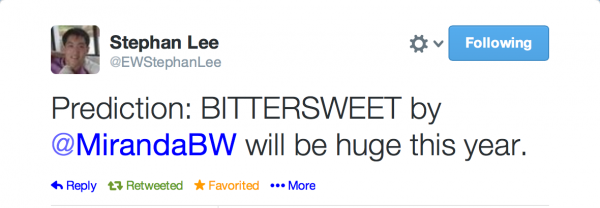I have been changing how I use social media, and want to talk a bit about the ethos I am trying to keep as the center of it: MORE SOCIAL, LESS MEDIA.
Why am I doing this? A few reasons:
- To ensure social media remains something more than a promotional tool for me.
- To not feel overwhelmed by all the “opportunity” to broadcast stuff across 8 social networks at once.
- To encourage more of what I love: true 1:1 connections with real people.
- To discourage what I don’t love: that feeling that everything I see is link-bait, trying to get me to click click click instead of slow down and interact with real people in small ways.
So there are some very practical actions I have been taking:
- I am no longer scheduling (or Buffering) posts on Twitter. This is a big one, as scheduling allows you to feel as though you are getting the maximum value of “exposure” on Twitter, without actually having to show up all the time.
- Finding a unique purpose for each social media channel I use. I don’t want to just cross-share the same post everywhere, but not really being present in each of these places. Rarely do I share the same thing on multiple channels. So the intention is to use Facebook differently than Twitter that Instagram, and share different things on each network.
- Sharing more original photos and original content overall, and AGGREGATING less. As I mentioned before, I LOVE the generosity of sharing links to others, and I plan to keep that as a core way I use social media. But… I don’t want to see my role as a “newspaper editor” on social media, sharing links to dozens of articles per day. So, for example, I am now using Instagram more since I like how I get to see original photos my friends and colleagues share.
- Checking in on other channels I haven’t used as much (EG: Google+ and Tumblr) to try to slowly discover a special differenting purpose for each, even if I’m not actively sharing stuff on them.
- Resisting strategic-only and promotional-only uses of certain social channels. EG: using Google+ JUST to build Google juice, or using Tumblr JUST to promote my courses.
These actions are based not on “best practices,” but what FEELS right. After all, my goal is to have wonderful experiences and small moments with other like-minded folks.
This is a process, and one filled with little decisions that don’t seem as straightforward as I’d like them to, such as:
- I’m owning up to the fact that I can’t be everywhere.
- I’m being honest that I want to respect each channel, each community. I still have no idea how to use Google+ in a distinct manner from Twitter or Facebook. And I resist just sharing the same stuff there as a mere obligation. Likewise, I think Tumblr is amazing, but have yet to FEEL a way that feels important and unique to me. That is actually the social channel I feel most guilty about not using more because I KNOW how lovely their community is.
- I feel pressure to “MAXIMIZE EYEBALLS” on social media to help move my business forward by just broadcasting 100 posts per day across every social channel. And I try hard to resist that pressure.
As you approach how you use social media, I would encourage you to forget what is expected. Forget “best practices” that feel hollow, that put you on the treadmill of always trying to keep up with yet another social media channel, and never feeling connected to real people because of it.
But I will be clear about two things:
- There are no rules, and PLEASE PLEASE PLEASE ignore my advice if it doesn’t feel right to you. Use social media in a manner that you enjoy.
- I am not judging how others use social media – I am simply reflecting on how I am using it and the deeper value I try to help writers and creative professionals find when using it.
Using social media means you are likely always doing a couple of things:
- Improvising constantly.
- Making yourself vulnerable.
- Searching for meaningful moments amidst a feeling of solitude.
I want to relate all of this back to how we do these things in real-world situations, because to me, social media is very much about the human things that haven’t changed regardless of “Like Buttons” “Pins” and “ReTweets.”
Let’s use an example from one of my favorite moments in music history: U2 playing Live Aid in 1985, and how that relates to finding a HUMAN CONNECTION amidst one of the biggest media events in history.
The band had about 15 minutes on stage, and the reality for Bono is that he is one person on a stage in front of 72,000 people in Wembley Stadium, and nearly two billion watching live worldwide. Because he is a “rockstar” it can be easy for us to forget how hard that responsibility is – to create a special experience for billions of people within 15 minutes.
Midway through their set, Bono goes completely unscripted. Watch what happens 6 minutes into this song – when Bono drops the mic with a loud thud, and beings to wander offstage:
What you see is Bono playing with boundaries, looking for personal connections, and INTERACTION, not mere promotion of their music.
These are the actions he takes in those 6 minutes, and what we can learn from them:
- He explores the physical limitations. He wanders to the very front – to where only the TV camera is supposed to operate, and then to the far right side of the stage, then all the way to the far left. These are the boundaries set for him, and there are big bays of TV cameras and photographers at either side, representing the MEDIA of the event.
- He focuses on individual faces, not the crowd in aggregate. He spots one person in the crowd, and motions to the security guards to bring that person over the barrier, and onto the stage. What comes next is frustration for Bono – NO one in the event staff is prepared take that action. Bono kills an entire minute onstage with his actions getting lost in translation, because the event staff wasn’t trained for this, and could care less about it. They are focused on managing tens of thousands of people, not on allowing one to pass through.
- He takes a leap of faith based on what feels right, not what is logical or expected of him from others. He jumps down what was estimated to be a 20 foot drop to reach the stadium floor. It happens so quickly in the video you almost don’t realize how nuts this was.
- He dances with a member of the audience, slowly. Touching ONE person meant a lot to him, it demystified the goal of the concert, from MEDIA to HUMAN. I think that with social media, we are often encouraged to consider social media as MASS MEDIA, which is why folks tend to love the idea of “going viral” – that this is all about scale. But I think the best use of social media is what happens between two people – JUST two people – and that is enough.
- He allows the crowd to participate As he climbs back on stage, Bono grabs the mic again and resumes the song, but quickly begins exploring again – singing impromptu covers versions of other people’s music. He holds out the mic so that the audience can sing along and be heard.
- He kept improvising forcing his band to do so with zero notice. You can see him giving them physical cues as to what they should do throughout – to bring the music up or down, or to cut the guitar completely.
None of this was planned, and in fact, Bono walked off the stage with the other members of his band incredibly furious at him. He thought he had just broken up the band, and relationships were strained with them for weeks. The following quotes are from the book U2 by U2:
“The band were very, very upset – they nearly fired me. My own depresson continued for a few days.”
– Bono
Why? Because that last 6 minutes was supposed to be saved for them to play their big single – the song they wanted to promote. As the band’s manager watched, this is what he felt:
“I was on the side of the stage with my heart in my boots because I thought he’d completely fucked it up. I couldn’t see him, I didn’t know where he’d gone. Afterwards we all though he had completely blown it.”
– Paul McGuinness
But as days passed after the concert, something unexpected happened. The result of Bono trying to make their performance SOCIAL and not MEDIA is that viewers found it to be a highlight for the event. It became a watershed moment for the band:
“All of U2’s albums went back into the charts and their status took a huge jump. Nothing was really quite the same again because now everyone knew who Bono was.”
– Paul McGuinness“Looking back, as I did a week later, I started to see what it was. It was the sense of real, total jeopardy, which is always very exciting for a live event, and Bono’s complete determination to make physical contact with the crowd and eventually getting there after two minutes of struggling over barriers. I think there was something about the amount of effort he had to put in to do it that somehow made it even more powerful.”
– The Edge
It was a human moment, and the effects of those 6 minutes still affect the band to this day.
For how you use social media, forget what is expected. Instead, focus on individual human connections.
Thanks!
-Dan

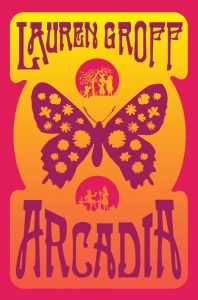 Lauren is a friend of a friend. He was very generous to put us in touch back in the fall, and she was incredibly generous to email me back such a warm, enthusiastic “I’m really going to try!” right away. I admire Lauren’s writing tremendously, and felt such an affinity for Arcadia, first of all because the hippie world of that place was not wildly dissimilar from my upbringing, and second of all because her book, like Bittersweet, is potently about place. Arcadia, as she writes it, comes alive like a character, and that’s something I aspired to do with Winloch in Bittersweet.
Lauren is a friend of a friend. He was very generous to put us in touch back in the fall, and she was incredibly generous to email me back such a warm, enthusiastic “I’m really going to try!” right away. I admire Lauren’s writing tremendously, and felt such an affinity for Arcadia, first of all because the hippie world of that place was not wildly dissimilar from my upbringing, and second of all because her book, like Bittersweet, is potently about place. Arcadia, as she writes it, comes alive like a character, and that’s something I aspired to do with Winloch in Bittersweet.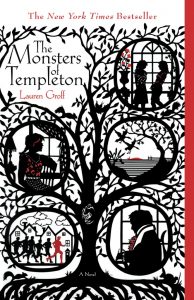 When I first contacted Lauren back in the early fall, I sent her a bound copy of my book. Then, in mid-November, I sent her a copy of my galley. This give me an opportunity to remind her who I was, and she was, again, absolutely warm (and didn’t need to be reminded who I was, which was blush worthy). Like so many of us, Lauren has a tremendous amount of obligations, and I knew it would be down to the wire if she’d be able to write a blurb or not. An earlier version of myself would have hesitated to nudge her again, but I did just that in the new year, and she replied with a blurb that pointed out something I’m thrilled to have noticed: that underneath the book’s “swift” exterior, it’s a “meditation on class, aspiration, and longing.”
When I first contacted Lauren back in the early fall, I sent her a bound copy of my book. Then, in mid-November, I sent her a copy of my galley. This give me an opportunity to remind her who I was, and she was, again, absolutely warm (and didn’t need to be reminded who I was, which was blush worthy). Like so many of us, Lauren has a tremendous amount of obligations, and I knew it would be down to the wire if she’d be able to write a blurb or not. An earlier version of myself would have hesitated to nudge her again, but I did just that in the new year, and she replied with a blurb that pointed out something I’m thrilled to have noticed: that underneath the book’s “swift” exterior, it’s a “meditation on class, aspiration, and longing.”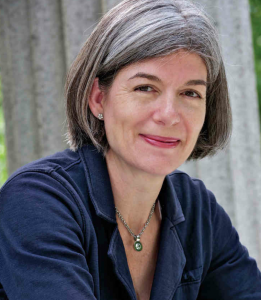 First, it was the Claire Messud
First, it was the Claire Messud 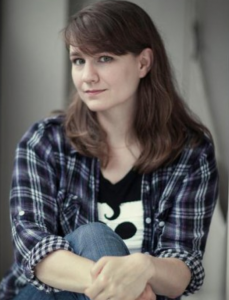 After this interview came out, there was much kerfuffle on the literary internet, mainly (at least in what I read) in support of Claire Messud. I loved what
After this interview came out, there was much kerfuffle on the literary internet, mainly (at least in what I read) in support of Claire Messud. I loved what 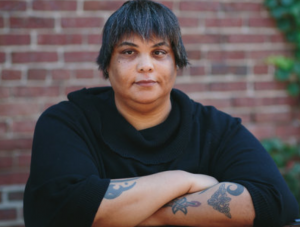 Then
Then 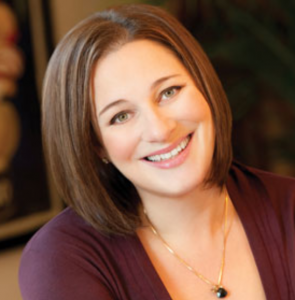 And finally, there was
And finally, there was 